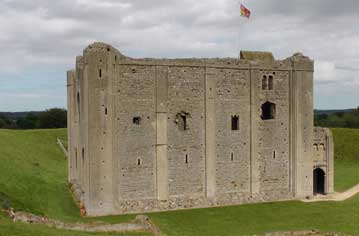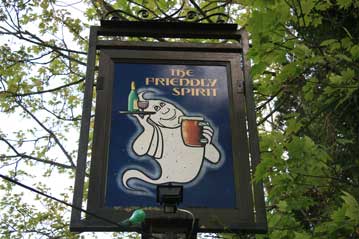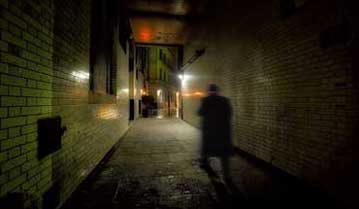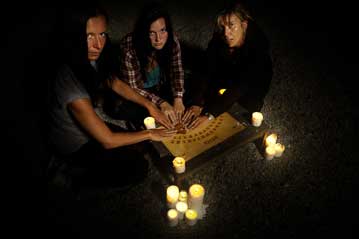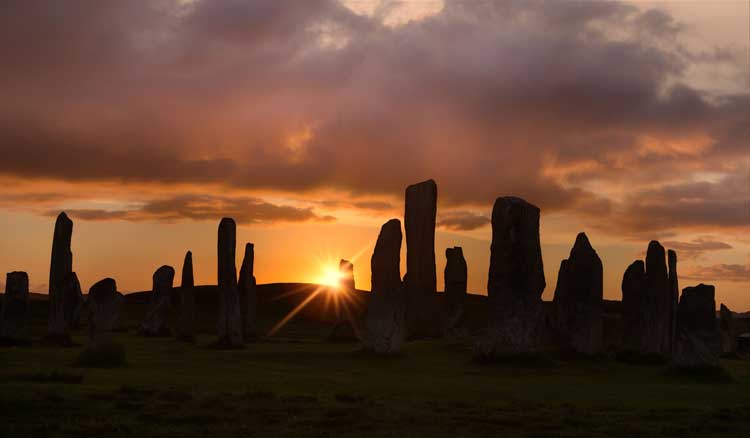
Places Of Ancient Worship
Long ago humankind was forced to confront nature and began attempts to harness its energy.
These ancient peoples understood little of the science of nature, but its influence was evident all around them.
It was the force that caused their crops to grow, their animals to breed, their water supply to bubble from the earth, and season to follow season.
In short, their very survival depended upon this mysterious force and they came to see its more physical manifestations as being gifts from their gods.
Worshipping The Sun
Meanwhile, that force which obviously controlled the overall cycle of things, the sun, came to be seen as the supreme deity, the one on which all life apparently depended and the one that primitive peoples the world over began to worship above all others.
One abiding aspect of sun-worship was the lighting of fires, since fire was believed to increase the potency of the sun.
Vestiges of these ancient beliefs and rituals are still with us.
For example, when we light bonfires to celebrate Guy Fawkes Night (November 5th) in Britain, we are in fact following a tradition that stretches back to the Celtic festival of Samhain (pronounced Sow-en), which literally meant "Summer's End," and which was celebrated around our November 1st, traditionally the first day of winter in the Celtic Calendar.
The next important festival was the winter solstice, the date when the shortening of the days, an alarming prospect for agricultural communities, came to an end and people could look forward to the longer days that would usher in the summer.
From time immemorial mankind had seen this as a pivotal period in the cycle of the seasons and bonfires were lit to welcome the sun back.
Consequently, December 25th and the days that surrounded it had long been celebrated as sacred days when in the 4th century Pope Julius 1st declared it as having been the birthday of Jesus Christ.
Stone Circles As Places Of Worship
Around 4,000 years ago people began focussing their rituals on centres where they could come together and worship their gods.
Thus it was stone circles, such as Stonehenge, were erected.
Though it must be said that the original purpose of such monuments is decidedly obscure, and we will never know for certain why ancient man erected these stone circles, there can be little doubt that many of them were used as centres for sun worship and that they were considered as holy places long before the birth of Christ.
Vestiges of this sun worship would be absorbed into the practices of almost every subsequent religion.
To the Romans, for example, December 25th was Deis Natalis Invicti Solis - the Birthday of the Unconquered Sun.
Christianity, as already mentioned, chose to honour it as the birthday of Christ and, of course, the image of the risen Christ as propagated by the early church borrowed a great deal from earlier deities and from the imagery of sun worship, after all was he not said to have been "the light of the world."
The Arrival Of Christianity
When the early Christian missionaries began their attempts to convert the native inhabitants of Britain and Ireland they found it difficult to win over the indigenous population from their ingrained values and deeply held beliefs, and unwilling to abandon their old deities and established places of worship.
The Christian solution was to adapt these long held and cherished beliefs and to either turn the Celtic Deities into Christian saints or else demonise them.
Meanwhile, well established places of worship could be utilised to help in setting down the roots of the new faith.
In AD601 Pope Gregory wrote to Abbot Mellitus, who was about to set out on a visit to England, to advise him on the course of action to be taken to swing the natives away from Paganism:-
"When (by God's help) you come to our most revered brother, Bishop Augustine - tell him how earnestly I have been pondering over the affairs of the English: I have come to the conclusion that the temples of the idols in England should not on any account be destroyed.
Augustine must smash the idols, but the temples themselves should be sprinkled with holy water and altars set up in them in which relics are to be enclosed.
For we ought to take advantage of well-built temples by purifying them from devil worship and dedicating them to the service of the true God.
In this way, I hope the people (seeing their temples are not destroyed) will leave their idolatry and yet continue to frequent the places as formerly, so coming to know and revere the true God."
The Church And The Old Religions
So it was that Christian churches were sited at places that had been considered holy since time immemorial, and no doubt much of their power was derived from the spiritual atmosphere that was associated with the site on which they stood.
Over succeeding centuries some of the old places of worship were forgotten, whilst others, no doubt, retained their place in the affections and spiritual beliefs of locals.
In this way many of the ragged vestiges of the older place of worship managed to survive.
Stone circles might be broken up and used in the construction of Christian churches, but one or two stones were sometimes kept aside or, like the huge Rudston Monolith in East Yorkshire, were allowed to stand side by side with the new church.
Centuries Of Upheaval
Gradually, after centuries of tumultuous upheaval - caused by the likes of Henry VIII's break with Rome, and Cromwell's attempts to stamp the puritan ethos on the religious beliefs of the country - Christianity and the older faiths achieved a certain amount of compatibility as people came to accept that the two could co-exist in relative harmony.
Tourist Attractions
Today people travel from all over the world to tour Britain and Ireland visiting ancient places of worship, such as Stonehenge and Avebury, along with places of Christian worship such as Westminster Abbey and York Minster in equal number.
The problem for many of us today is that we live in an age that knows the price of all things and the value of nothing. Old certainties have been eaten away by the advances of science and technology.
Organised religion is failing us, as demonstrated by the rapid decline in church attendance rates.
Ancient people - the exquisite monuments they have left behind forbid that I refer to them by their more common description of "primitive" - would no doubt have given their right arms to enjoy the benefits of our modern age, but they have acquired at a price.
Many of us are searching for something in this throwaway age of instant celebrity.
The Need To Believe
Humankind, by its very nature, needs something or someone to believe in, and at these places where our distant ancestors found the elusive means of communion with whatever God's they worshipped or turned to in times of need, we can find it.
And, when we have spent a few moments of quiet contemplation at these places, we come away spiritually recharged and more understanding of the enchantment that is still to be found at so many sites that lie scattered around mystical Britain and Ireland.


